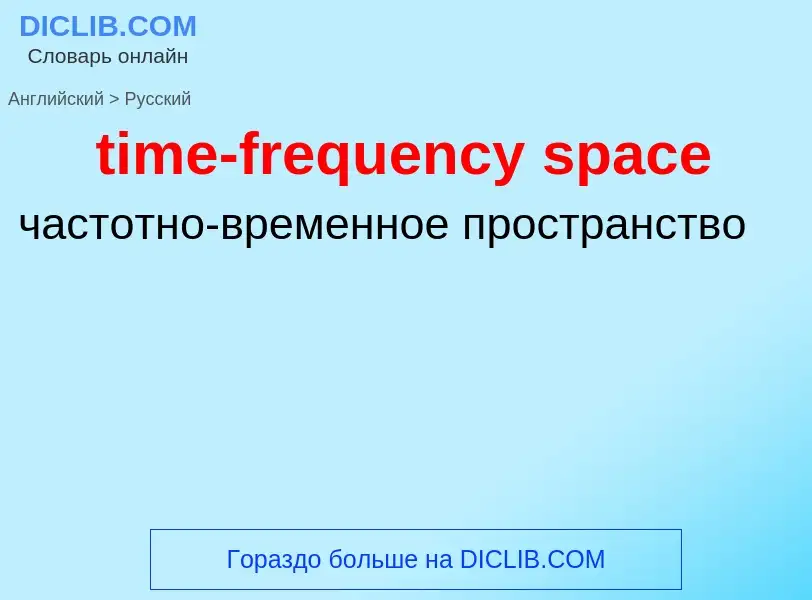Übersetzung und Analyse von Wörtern durch künstliche Intelligenz ChatGPT
Auf dieser Seite erhalten Sie eine detaillierte Analyse eines Wortes oder einer Phrase mithilfe der besten heute verfügbaren Technologie der künstlichen Intelligenz:
- wie das Wort verwendet wird
- Häufigkeit der Nutzung
- es wird häufiger in mündlicher oder schriftlicher Rede verwendet
- Wortübersetzungsoptionen
- Anwendungsbeispiele (mehrere Phrasen mit Übersetzung)
- Etymologie
time-frequency space - Übersetzung nach russisch
[speiʃiəu'temp(ə)rəl]
прилагательное
общая лексика
пространственно-временной
математика
пространственноподобный
Смотрите также
Definition
Wikipedia
A time–frequency representation (TFR) is a view of a signal (taken to be a function of time) represented over both time and frequency. Time–frequency analysis means analysis into the time–frequency domain provided by a TFR. This is achieved by using a formulation often called "Time–Frequency Distribution", abbreviated as TFD.
TFRs are often complex-valued fields over time and frequency, where the modulus of the field represents either amplitude or "energy density" (the concentration of the root mean square over time and frequency), and the argument of the field represents phase.


!['''here''']]. '''here''']].](https://commons.wikimedia.org/wiki/Special:FilePath/Accelerated relativistic observer with horizon.png?width=200)



!['''Click here to animate.''']] '''Click here to animate.''']]](https://commons.wikimedia.org/wiki/Special:FilePath/General relativity time and space distortion frame 1.png?width=200)











